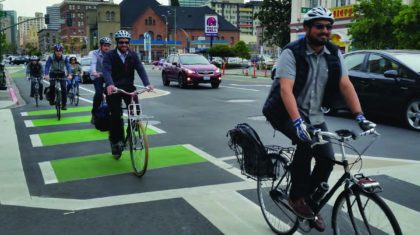
By Sam Piper, Senior Designer and Kristen Maddox-O’Toole, Planner
Every planner and engineer working on an active transportation project wishes they had better bicycle and pedestrian data. The ability to access more robust data helps communities:
- Determine where investments in walking and biking infrastructure are most needed
- Assess changes over time, draw conclusions about the impact of new facilities, and improve the design of future facilities
- Understand crashes involving people walking or bicycling more than is typically possible with crash data alone
- Quantify the benefits of walking and biking, which ultimately makes active transportation projects more competitive for funding
Fortunately, there are a number of current and emerging technologies that can capture and process non-motorized data efficiently and economically. After researching several of these technologies, Alta is excited to announce the publication of our Innovation in Bicycle and Pedestrian Counts white paper. This paper outlines the challenges that many communities face with conventional pen and paper count programs. It then identifies many new technologies that can automate, simplify, and expedite the collection of bicycle and pedestrian data.
Through our research, it became evident that new technologies generally fall into three broad categories: mobile technology, imagery, and low-cost hardware, which are described below:
- The mobile technology category includes software that can be downloaded onto a mobile device.
- The imagery category includes technology that uses sensors to capture bicycle and pedestrian movements
- The low-cost hardware category includes stand-alone technologies that are deployed to capture non-motorized data.
Some overlap exists between technologies among the white paper’s categories (i.e. Knock Software, creator of a mobile application called Ride Report, is fine-tuning its own sensor). Generally, however, they are helpful in understanding how the different services are structured. The graphic below lists the range of technologies that were reviewed:

View and download the white paper here.


